英语专业 写作教程Unit 7
- 格式:doc
- 大小:37.00 KB
- 文档页数:4
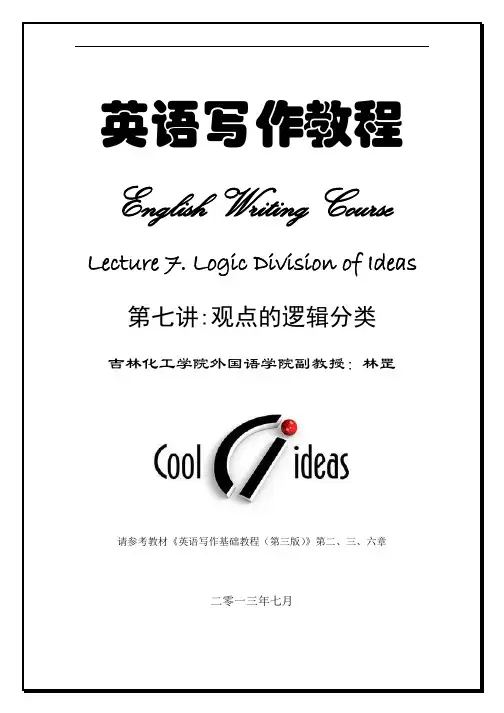
英语写作教程 English Writing Course Lecture 7. Logic Division of Ideas 第七讲:观点的逻辑分类 吉林化工学院外国语学院副教授:林罡请参考教材《英语写作基础教程(第三版)》第二、三、六章二零一三年七月Lecture 7 Logic Division of Ideas (1)Prewriting: Group Ideas Logically (1)Essay Model: Logical Division of Ideas (3)Part I. Organisation: Logical Division of Ideas (5)Developing a Logical Division Topic (5)Using examples to support (6)Practice: Examples (7)Introducing Examples (8)Practice: Developing Logical Division Paragraphs (9)Writing Assignment: Logical Division of Ideas Group Essay (10)Part II. Grammar and Mechanics (11)Model Essay: Appositives and Adjective Clauses (11)Restrictive and Non-restrictive Appositives (13)Practice: Commas with Restrictive and Non-restrictive Appositives (14)Restrictive and Nonrestrictive Adjective Clauses (16)Practice: Commas with Restrictive and Non-restrictive Adjective Clauses (16)Practice: Commas / Capitalisation Review (17)Part III. Sentence Structures: Complex Sentences with Adjective Clauses (18)Subject Pattern Adjective Clauses (19)Practice: Subject Pattern Adjective Clauses (20)Object Pattern Adjective Clauses (21)Practice: Object Pattern Adjective Clauses (22)Practice: Adjective Clause (22)Writing Assignment: Sentence Combining (23)Part IV The Writing Portfolio (25)Step 1. Prewrite to get ideas (25)Step 2. Organise the idea. (25)Step 3. Write the Rough Draft (25)Step 4. Edit the Rough Draft. (25)STEP 5. Write the Second Draft (27)STEP 6. Write the Final Draft. (27)Part V. Vocabulary to Enhance your Writing (28)Lecture 7 Logic Division of IdeasIn this lecture, you will expand your knowledge of essay writing. You will learn how to organise a large, complex topic by grouping ideas together and discussing each group in a separate paragraph. This method of organisation, called logical division of ideas, is useful for many kinds for writing, from business letter and memos to college essays and research papers.Prewriting: Group Ideas LogicallyB. Divide the list of sports on the workbook. There is more than one possible way to divide the list. First, decide what your categories will be and label the chart. You may have more or fewer categories than there are columns in the chart. If you need more columns or more space in each column, add them.Essay Model: Logical Division of IdeasPart I. Organisation: Logical Division of IdeasWhen you write an essay, you must divide your topic into paragraphs. One method of dividing a topic is to use time order. Another method of dividing the topic might be to write about the various causes of the event. To do this, you would group them into social, political, and economic causes and write about each group separately.Dividing a topic by grouping ideas that have something in common is called logical division of ideas. You can organise the information on many topics by this method. For example, you can divide the topic of sports into individual sports and team sports, or summer, winter, and year-round sports, or sports played with a ball, and sports played without a ball, and so on.Developing a Logical Division TopicUsing examples to supportPractice: ExamplesIntroducing ExamplesPractice: Developing Logical Division ParagraphsWriting Assignment: Logical Division of Ideas Group Essay Work with a group of four to six students and write a four or five-paragraph logical division essay on the topic “kinds of Good Lies”. A different student will write each paragraph, and one student will prepare the outline.1.Discuss as a group ways to write a funnel introduction. After your discussion, assignone person to write the introductory paragraph.2.Discuss as a group ways to write a concluding paragraph. Assign one person to writethe conclusion.3.Assign a different student to write each body paragraph.4.Assign one student to write a detailed outline.5.After you have completed your rough drafts, edit and revise each paragraph in yourgroup. Exchange papers and check each other’s work. Check each body paragraph especially for adequate supporting examples. Make any necessary corrections or revisions. Then combine your paragraphs into one essay (type in Document Format) and check it for completeness and coherence. Refer to the Editing Checklist. Finally, check the outline and clip it to the essay before handing it in.Part II. Grammar and MechanicsModel Essay: Appositives and Adjective ClausesAs you read the model essay, look for sentences that contain the words who, which, in which, on which and that. Underline the clauses that begin with these words.Restrictive and Non-restrictive AppositivesPractice: Commas with Restrictive and Non-restrictive Appositives Underline the appositive in each of the following sentences. Then decide whether it is necessary or unnecessary and write necessary or unnecessary in the parentheses following each sentence. Finally, add commas to separate an unnecessary appositive from the rest of the sentence.Write pairs of sentences containing appositive on your own. In one sentence, make the appositive unnecessary (non-restrictive). In the other sentence, make it necessary (restrictive). Underline the appositives and add commas if necessary. You may write about holidays in your country or about any other topic.Restrictive and Nonrestrictive Adjective ClausesPractice: Commas with Restrictive and Non-restrictive AdjectiveClausesPractice: Commas / Capitalisation ReviewPart III. Sentence Structures: Complex Sentences with Adjective ClausesSubject Pattern Adjective ClausesPractice: Subject Pattern Adjective ClausesObject Pattern Adjective ClausesPractice: Object Pattern Adjective ClausesPractice: Adjective ClauseWriting Assignment: Sentence CombiningPart IV The Writing PortfolioNow let’s complete the writing process you began at the beginning of this lecture. Write an essay discussing different types of television programs that students in your class watch. Follow these steps in order to write a good essay.Step 1. Prewrite to get ideasThis is the step you completed at the beginning of the lecture.Step 2. Organise the idea.Step 3. Write the Rough DraftStep 4. Edit the Rough Draft.STEP 5. Write the Second DraftWrite SECOND DRAFT at the top of your WWJ (Weekly Writing Journal). Write the second draft of your composition. Then ask your partner to proofreading.STEP 6. Write the Final Draft.After your partner returns your composition, write a neat final copy to hand in for final evaluation. Write Final Draft at the top of your paper.Part V. Vocabulary to Enhance your WritingUsing your English-English dictionary to study the following pairs of words, and then write out the difference.ANSWERS FOR LAST WEEK’S VOCABULARY STUDIES。
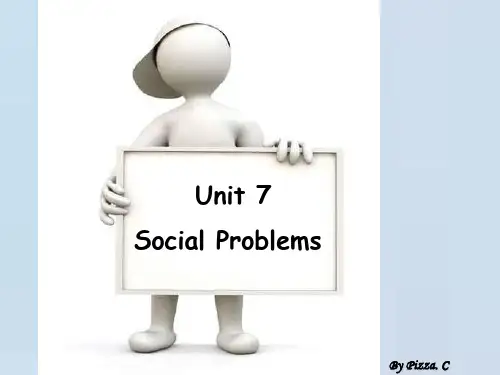
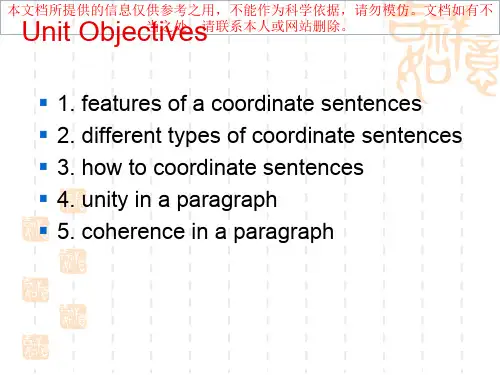
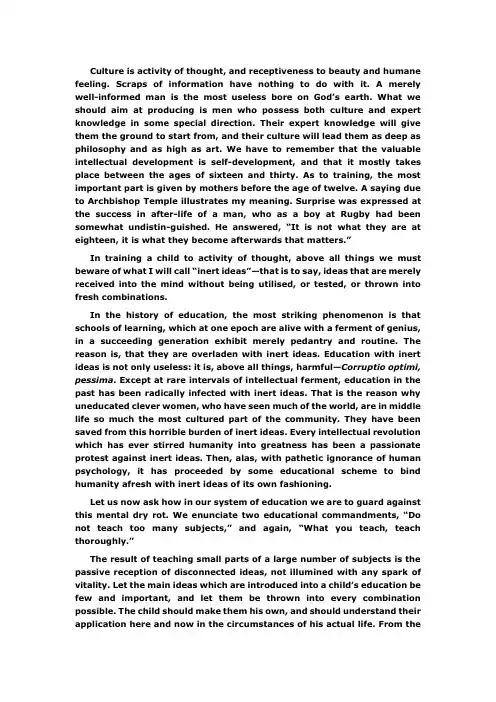
Culture is activity of thought, and receptiveness to beauty and humane feeling. Scraps of information have nothing to do with it. A merely well-informed man is the most useless bore on God’s earth. What we should aim at producing is men who possess both culture and expert knowledge in some special direction. Their expert knowledge will give them the ground to start from, and their culture will lead them as deep as philosophy and as high as art. We have to remember that the valuable intellectual development is self-development, and that it mostly takes place between the ages of sixteen and thirty. As to training, the most important part is given by mothers before the age of twelve. A saying due to Archbishop Temple illustrates my meaning. Surprise was expressed at the success in after-life of a man, who as a boy at Rugby had been somewhat undistin-guished. He answered, “It is not what they are at eighteen, it is what they become afterwards that matters.”In training a child to activity of thought, above all things we must beware of what I will call “inert ideas”—that is to say, ideas that are merely received into the mind without being utilised, or tested, or thrown into fresh combinations.In the history of education, the most striking phenomenon is that schools of learning, which at one epoch are alive with a ferment of genius, in a succeeding generation exhibit merely pedantry and routine. The reason is, that they are overladen with inert ideas. Education with inert ideas is not only useless: it is, above all things, harmful—Corruptio optimi, pessima. Except at rare intervals of intellectual ferment, education in the past has been radically infected with inert ideas. That is the reason why uneducated clever women, who have seen much of the world, are in middle life so much the most cultured part of the community. They have been saved from this horrible burden of inert ideas. Every intellectual revolution which has ever stirred humanity into greatness has been a passionate protest against inert ideas. Then, alas, with pathetic ignorance of human psychology, it has proceeded by some educational scheme to bind humanity afresh with inert ideas of its own fashioning.Let us now ask how in our system of education we are to guard against this mental dry rot. We enuncia te two educational commandments, “Do not teach too many subjects,” and again, “What you teach, teach thoroughly.”The result of teaching small parts of a large number of subjects is the passive reception of disconnected ideas, not illumined with any spark of vitality. Let the main ideas which are introduced into a child’s education be few and important, and let them be thrown into every combination possible. The child should make them his own, and should understand their application here and now in the circumstances of his actual life. From thevery beginning of his education, the child should experience the joy of discovery. The discovery which he has to make, is that general ideas give an understanding of that stream of events which pours through his life, which is his life. By understanding I mean more than a mere logical analysis, though that is included. I mean “understanding’ in the sense in which it is used in the French proverb, “To understand all, is to forgive all.” Pedants sneer at an education which is useful. But if education is not useful, what is it? Is it a talent, to be hidden away in a napkin? Of course, education should be useful, whatever your aim in life. It was useful to Saint Augustine and it was useful to Napoleon. It is useful, because understanding is useful.I pass lightly over that understanding which should be given by the literary side of education. Nor do I wish to be supposed to pronounce on the relative merits of a classical or a modern curriculum. I would only remark that the understanding which we want is an understanding of an insistent present. The only use of a knowledge of the past is to equip us for the present. No more deadly harm can be done to young minds than by depreciation of the present. The present contains all that there is. It is holy ground; for it is the past, and it is the future. At the same time it must be observed that an age is no less past if it existed two hundred years ago than if it existed two thousand years ago. Do not be deceived by the pedantry of dates. The ages of Shakespeare and of Molière are no less past than are the ages of Sophocles and of Virgil. The communion of saints is a great and inspiring assemblage, but it has only one possible hall of meeting, and that is, the present, and the mere lapse of time through which any particular group of saints must travel to reach that meeting-place, makes very little difference.Passing now to the scientific and logical side of education, we remember that here also ideas which are not utilised are positively harmful. By utilising an idea, I mean relating it to that stream, compounded of sense perceptions, feelings, hopes, desires, and of mental activities adjusting thought to thought, which forms our life. I can imagine a set of beings which might fortify their souls by passively reviewing disconnected ideas. Humanity is not built that way except perhaps some editors of newspapers.In scientific training, the first thing to do with an idea is to prove it. But allow me for one moment to extend the meaning of “prove”; I mean—to prove its worth. Now an idea is not worth much unless the propositions in which it is embodied are true. Accordingly an essential part of the proof of an idea is the proof, either by experiment or by logic, of the truth of the propositions. But it is not essential that this proof of the truth should constitute the first introduction to the idea. After all, its assertion by the authority of respectable teachers is sufficient evidence to begin with. Inour first contact with a set of propositions, we commence by appreciating their importance. That is what we all do in after-life. We do not attempt, in the strict sense, to prove or to disprove anything, unless its importance makes it worthy of that honour. These two processes of proof, in the narrow sense, and of appreciation, do not require a rigid separation in time. Both can be proceeded with nearly concurrently. But in so far as either process must have the priority, it should be that of appreciation by use.Furthermore, we should not endeavour to use propositions in isolation. Emphatically I do not mean, a neat little set of experiments to illustrate Proposition I and then the proof of Proposition I, a neat little set of experiments to illustrate Proposition II and then the proof of Proposition II, and so on to the end of the book. Nothing could be more boring. Interrelated truths are utilised en bloc, and the various propositions are employed in any order, and with any reiteration. Choose some important applications of your theoretical subject; and study them concurrently with the systematic theoretical exposition. Keep the theoretical exposition short and simple, but let it be strict and rigid so far as it goes. It should not be too long for it to be easily known with thoroughness and accuracy. The consequences of a plethora of half-digested theoretical knowledge are deplorable. Also the theory should not be muddled up with the practice. The child should have no doubt when it is proving and when it is utilising. My point is that what is proved should be utilised, and that what is utilised should—so far, as is practicable—be proved. I am far from asserting that proof and utilisation are the same thing.。
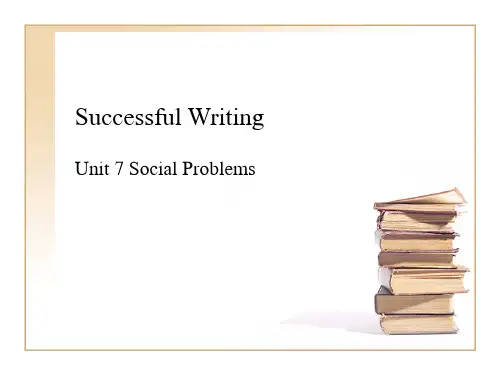
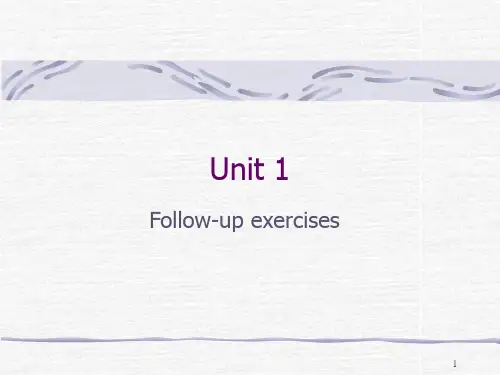
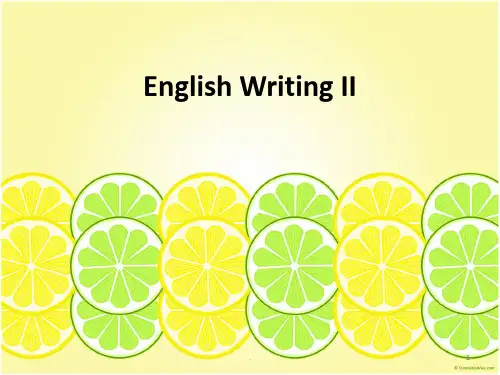
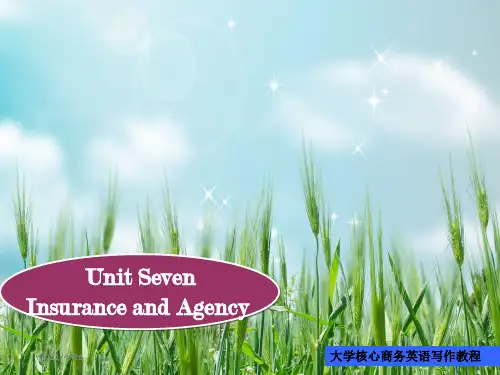
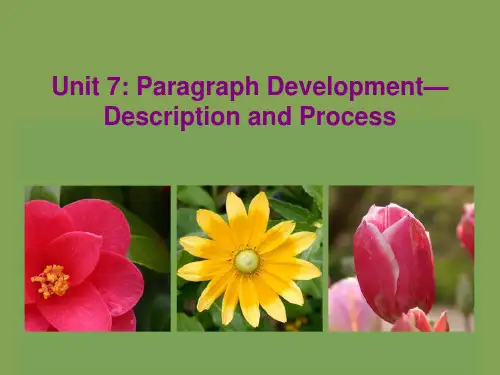

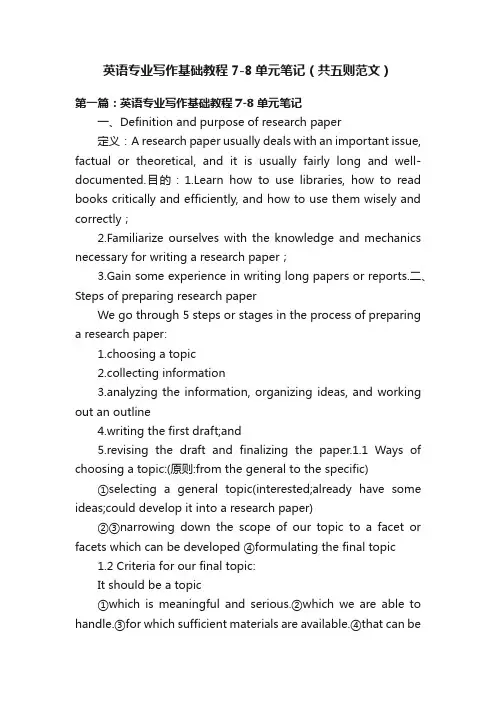
英语专业写作基础教程7-8单元笔记(共五则范文)第一篇:英语专业写作基础教程7-8单元笔记一、Definition and purpose of research paper定义:A research paper usually deals with an important issue, factual or theoretical, and it is usually fairly long and well-documented.目的:1.Learn how to use libraries, how to read books critically and efficiently, and how to use them wisely and correctly;2.Familiarize ourselves with the knowledge and mechanics necessary for writing a research paper;3.Gain some experience in writing long papers or reports.二、Steps of preparing research paperWe go through 5 steps or stages in the process of preparinga research paper:1.choosing a topic2.collecting information3.analyzing the information, organizing ideas, and working out an outline4.writing the first draft;and5.revising the draft and finalizing the paper.1.1 Ways of choosing a topic:(原则:from the general to the specific)①selecting a general topic(interested;already have some ideas;could develop it into a research paper)②③narrowing down the scope of our topic to a facet or facets which can be developed ④formulating the final topic1.2 Criteria for our final topic:It should be a topic①which is meaningful and serious.②which we are able to handle.③for which sufficient materials are available.④that can betreated objectively.⑤that is not too topical.2.1Ways of collecting information①using the library②reading③taking notes2.2How can we find books in library?We can find the books according to the first words of the titles of books or the;last names of the authors.2.3书目卡Calllast(姓),first(名)Number1城市:出版社,时间***p2.4 How are the books in libraries arranged?Books are arranged alphabetically according to their authors ,titles and the subjects they belong to.2.5How do you look for A Doll’s House?We go to the title catalogue file and look up Doll’s House and Color Purple ,ignoring the indefinite article “A” in the first book and the definit e article “The” in the second book.2.6 What do you do to get the information of E.M.Foster?We go to the author catalogue file and look up Foster, E.M., for the cards are arranged according to the last names of the authors.2.7 What is the right way of reading ?To read book quickly and critically.We may first look at the title of contents or the index to find out what chapter or parts of a book might give us some useful material.2.8 How can you be sure that your information is not outdated or biased ?We find the latest edition of the book and compare what is said in it with what other books say on the same topic to make sure that the information we have is not outdated or biased.2.9Rules of taking notes①take notes on cards, or on separate pieces of paper②place only one note on a card.③be selective.2.10 Kinds of information on a note carda.the fact, idea or opinion,b.the source.c.the author’s last name and the page number2.11 Kinds of notesa.the direct quotation(a note that takes down the exact wording of a particular effective statement on a subject)b.the paraphrase(a note that takes down the information of a source in our own words)c.the summary(a note that abstracts and condenses a large amount of material into a small space)Whichever method we use, we must cite the source of the information.如果原文有误,但仍就引用过来,须在后面标注[sic]。
新生代英语第二版unit7作文Life is often described as a journey filled with twists and turns, and it is through these experiences that we cometo understand ourselves better. Self-discovery is a process that can be both enlightening and challenging. It is ajourney that encourages us to explore who we truly are, what we value, and how we can contribute to the world around us.In this essay, I will share my own experiences of self-discovery and the lessons I have learned along the way.The initial catalyst for my journey of self-discovery began during my teenage years. Like many adolescents, I felta sense of confusion about my identity and purpose. This wasa time of significant change in my life, as I transitionedfrom the carefree days of childhood to the more complex demands of adulthood. Social pressures, academic expectations, and the quest for independence left me feeling lost at times.In search of clarity, I started to reflect on my passions and interests.I remember vividly the moment I first picked up a paintbrush. It was during an art class in high school, whereI had the opportunity to express myself creatively. The soothing strokes of the brush on canvas allowed me to escape the chaos of teenage life. As I immersed myself in the worldof colors and forms, I discovered a newfound sense of freedom. Art became an outlet for my emotions, and through it, I began to understand more about myself. I found that creativity was not just a hobby for me; it was an integral part of my identity.As my passion for art grew, I decided to participate in various competitions and art exhibitions. These experiencesnot only honed my skills but also provided me with a platform to showcase my work. With every piece I created, I poured a part of my soul into it, allowing my innermost thoughts andfeelings to take shape. The positive feedback and encouragement from my peers and mentors further fueled my desire to explore this path.While my artistic journey was unfolding, I also became aware of the importance of self-awareness. I realized that in order to create meaningful art, I needed to understand my emotions and the world around me. I started journaling, using writing as a tool for introspection. Through my words, I could articulate my thoughts and feelings, making sense of the turbulent emotions that came with adolescence. Writing became a companion in my journey, helping me navigate the complexities of my existence.However, self-discovery is not linear; it is fraught with challenges and setbacks. One of the most significant obstacles I faced was the fear of judgment. As I shared my artwork with others, I became acutely aware of the vulnerability that comes with exposing one’s creativity. Thefear of criticism often held me back from fully embracing my artistic abilities. It was a pivotal moment when I chose to confront this fear head-on. I sought feedback and engaged in discussions about my art. Gradually, I learned that criticism could be constructive and that embracing vulnerability is a strength, not a weakness.In addition to my artistic pursuits, I began to explore the world beyond my immediate surroundings. Volunteering became a significant part of my life as I sought to understand different perspectives and experiences. I joined community initiatives that focused on issues such as education and environmental conservation. Through volunteering, I met people from diverse backgrounds, each with their own stories. Listening to their experiences opened my eyes to the various dimensions of life, fostering a greater sense of empathy within me.One particular experience stands out in my memory. I volunteered at a local children’s shelter, where I had the opportunity to work with children from disadvantaged backgrounds. Their resilience and joy, despite facing numerous challenges, were nothing short of inspiring. I realized that health and happiness can exist even in the most difficult circumstances. This experience not only deepened my appreciation for life but also reinforced my desire to impact others positively.As I approached the end of high school, I found myself at a crossroads. The pressure to choose a career path was overwhelming. I struggled to align my passion for art withthe expectations of traditional career routes. However, Iknew that I could not ignore my love for creativity. After much contemplation, I decided to pursue a degree in Fine Arts. This decision marked a significant turning point in myjourney of self-discovery, as it was a step toward fully embracing my identity.College was a melting pot of experiences that further shaped my journey. It provided me with the freedom to explore my creativity without constraints. I engaged in various art forms, from painting to sculpture, and even experimental installations. The vibrant atmosphere of collaboration and innovation inspired me to push my boundaries. I found joy in learning from my peers and sharing ideas, which ultimately led to the birth of my unique artistic voice.Throughout this time, I also became increasingly aware of the social issues that permeated our society. My experiences in volunteering ignited a desire to use my art as a form of activism. I began to create works that addressed themes of inequality, environmental issues, and mental health. Art became a medium through which I could raise awareness and spark conversations about important topics. This realization solidified my commitment to not only pursue my passion but also use it to make a difference.My journey of self-discovery was further enriched by travel. Exploring different cultures and environments allowed me to gain fresh perspectives on life. I traveled to various countries, keenly observing how art was an integral part of each culture. From street murals in urban settings to traditional crafts in remote villages, I witnessed the power of art to connect people and convey messages. These experiences motivated me to infuse elements from different cultures into my own work, creating a fusion that celebrated diversity.As I navigate the landscape of adulthood, I continue to embrace change and growth. Self-discovery is not adestination but rather an ongoing journey. I have learned to appreciate the ebbs and flows of life, understanding that each experience, whether positive or negative, contributes to my growth. I have grown more comfortable with uncertainty and have learned to trust the process.Moreover, I have come to realize the importance of surrounding myself with supportive individuals. My journey would not have been the same without the encouragement of mentors, friends, and family. Their unwavering belief in my abilities pushed me to keep pursuing my passions, even in the face of adversity. I have learned that authentic connections can provide resilience and strength during difficult times.In conclusion, my journey of self-discovery has been a tapestry of experiences that have shaped who I am today. From the initial spark of creativity to embracing vulnerability and exploring the world, each step has contributed to my growth. I now understand that self-discovery is a lifelong process that involves reflection, exploration, and a willingness to embrace change. It is about understanding our values, passions, and the impact we can have on others. As I continue on this journey, I am excited to uncover the layers of my identity and use my creativity to inspire, connect, and contribute to a better world.。
Unit7PART III GAMMARLack of UnityNow ask student to summarize the rules of unity.Faulty ParallelismSuggested answers to the exercisea.She hopes to spend this holiday either in Shanghai or in Suzhou.b.Showing/ To show sincerity and keeping /to keep promises arethe basic requirements of a real friend.c.I want to know how big this house is and when it was built.d.In the past ten years, Mr. W eir has been a waiter, a tour guide, anda teacher of English.Now ask students to summarize the rule of against faulty parallelism.Reference for the Classroom Activitiesa.(U)This is my favorite beer.Or: The Egyptians started to drink beer almost 5.000 years ago.b.(U)My first English teacher stayed in Britain for five years.Or: my first English teacher is bad cook.c.(P)Taking a walk alone or chatting with a friend over the phone can greatly relax your tension.d.(U)China has a large population.Or: Many people in the States like Chinese food.e.(U, P)Learning to speak English and use computer is important for finding a good job in the future.f.(U)Practice like drawing eggs can lay a solid foundation for an artist.Or: Da V inci was also good at scientific invention.g.(P)If one wants to find a good job with fewer working hours and a good salary, he must work hard at university.h.(U)I believe Dr. Schmidt is your best choice for this coming election.i.(P)For this paper, you must choose a topic that is both interesting and helpful.PART V FOLLOW-UP EXERCISE1. a. or b. andc. andd. bute. butf. butg. and h. buti. yet/but, so j. and2. a. Many children spend a lot of time watching TV, and (they) liketo talk about TV programs when they meet.b. History repeats itself; historians repeat each other.c. I like beer, but I never drink beer in the morning or when thetemperature drops below 5 degrees.d. I looked for the paper in my office, and (I) searched for it in mybedroom, but I couldn’t find it.e. Y ou cannot learn to write unless you really want to write well,(you) practice a lot, and (you) learn from your own mistakes. f. A money lender serves you in the present tense, lends you in theconditional mood, keeps you in the subjunctive mood, and ruins you in the future tense.3. Paragraph 1: (1) either (2) or (3) and (4) or (5) and (6) and Paragraph 2: (7) and (8) and (9) and (10) but4.Reference version。
Unit7
PART III GAMMAR
Lack of Unity
Now ask student to summarize the rules of unity.
Faulty Parallelism
Suggested answers to the exercise
a.She hopes to spend this holiday either in Shanghai or in Suzhou.
b.Showing/ To show sincerity and keeping /to keep promises are
the basic requirements of a real friend.
c.I want to know how big this house is and when it was built.
d.In the past ten years, Mr. W eir has been a waiter, a tour guide, and
a teacher of English.
Now ask students to summarize the rule of against faulty parallelism.
Reference for the Classroom Activities
a.(U)
This is my favorite beer.
Or: The Egyptians started to drink beer almost 5.000 years ago.
b.(U)
My first English teacher stayed in Britain for five years.
Or: my first English teacher is bad cook.
c.(P)
Taking a walk alone or chatting with a friend over the phone can greatly relax your tension.
d.(U)
China has a large population.
Or: Many people in the States like Chinese food.
e.(U, P)
Learning to speak English and use computer is important for finding a good job in the future.
f.(U)
Practice like drawing eggs can lay a solid foundation for an artist.
Or: Da V inci was also good at scientific invention.
g.(P)
If one wants to find a good job with fewer working hours and a good salary, he must work hard at university.
h.(U)
I believe Dr. Schmidt is your best choice for this coming election.
i.(P)
For this paper, you must choose a topic that is both interesting and helpful.
PART V FOLLOW-UP EXERCISE
1. a. or b. and
c. and
d. but
e. but
f. but
g. and h. but
i. yet/but, so j. and
2. a. Many children spend a lot of time watching TV, and (they) like
to talk about TV programs when they meet.
b. History repeats itself; historians repeat each other.
c. I like beer, but I never drink beer in the morning or when the
temperature drops below 5 degrees.
d. I looked for the paper in my office, and (I) searched for it in my
bedroom, but I couldn’t find it.
e. Y ou cannot learn to write unless you really want to write well,
(you) practice a lot, and (you) learn from your own mistakes. f. A money lender serves you in the present tense, lends you in the
conditional mood, keeps you in the subjunctive mood, and ruins you in the future tense.
3. Paragraph 1: (1) either (2) or (3) and (4) or (5) and (6) and Paragraph 2: (7) and (8) and (9) and (10) but
4.Reference version。